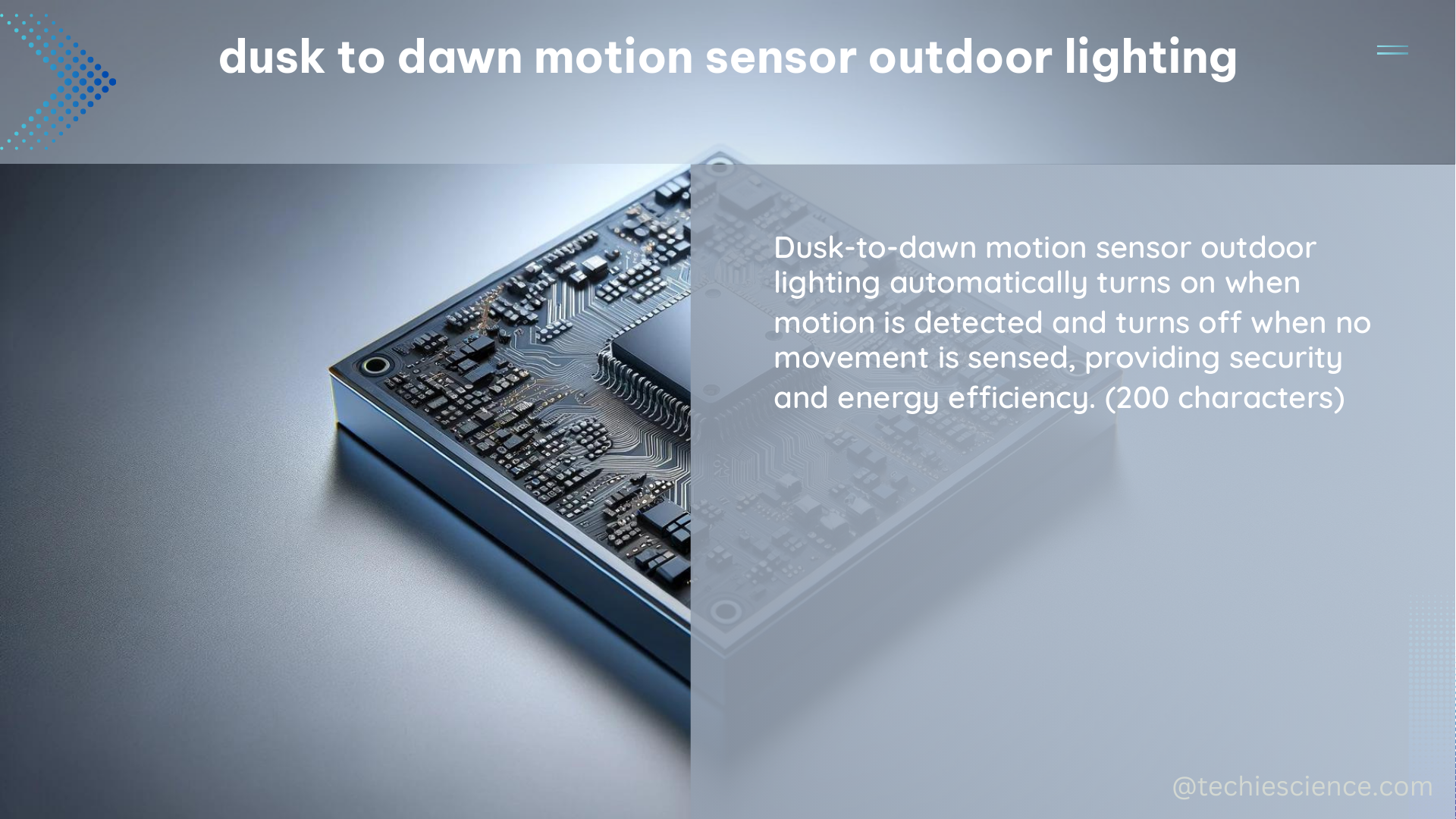Dusk to dawn motion sensor outdoor lighting is a versatile and energy-efficient lighting solution that automatically turns on when motion is detected during the evening hours and turns off at dawn. This type of lighting system is designed to provide security, visibility, and convenience while minimizing energy consumption. In this comprehensive guide, we will delve into the technical specifications and a step-by-step DIY installation process to help you make an informed decision and successfully set up your own dusk to dawn motion sensor outdoor lighting system.
Technical Specifications of Dusk to Dawn Motion Sensor Outdoor Lighting
Lux Level
The lux level is a measure of the intensity of light, and it is a crucial factor in determining the effectiveness of dusk to dawn motion sensor outdoor lighting. Most systems on the market have a lux level range of 1 to 20 lux, which is equivalent to the light intensity of a full moon (1 lux) to a brightly lit room (20 lux). This wide range ensures that the lighting system can adapt to various ambient light conditions, providing the necessary illumination without wasting energy.
Motion Detection Range
The motion detection range of dusk to dawn motion sensor outdoor lighting varies depending on the model, but most systems have a detection range of up to 30 feet. This range is typically measured in a 180-degree arc, allowing the sensor to cover a wide area and effectively detect any movement within its coverage zone.
Light Sensitivity
The light sensitivity of dusk to dawn motion sensor outdoor lighting is measured in lux. Most systems have a light sensitivity range of 0.1 to 100 lux, which means they can detect motion even in low light conditions. This feature ensures that the lighting system activates when needed, providing security and visibility during the night.
Power Consumption
Dusk to dawn motion sensor outdoor lighting systems are designed to be energy-efficient, with most using LED bulbs that consume up to 80% less power than traditional incandescent or halogen bulbs. This translates to significant cost savings on your energy bills and a reduced environmental impact.
Installation Height
The optimal installation height for dusk to dawn motion sensor outdoor lighting is typically between 8 to 10 feet. This height range ensures that the sensor can effectively detect motion within its designated coverage area while also providing the necessary illumination for the desired space.
DIY Installation Guide for Dusk to Dawn Motion Sensor Outdoor Lighting

Step 1: Choose the Location
Carefully select the location for your dusk to dawn motion sensor outdoor lighting system. Consider areas near entrances, walkways, or other high-traffic zones where motion detection and illumination are most crucial. Ensure that the chosen location provides maximum coverage and motion detection range.
Step 2: Select the System
Research and choose a dusk to dawn motion sensor outdoor lighting system that meets your specific needs. Consider factors such as lux level, motion detection range, light sensitivity, and power consumption to find the best fit for your property.
Step 3: Install the System
Follow the manufacturer’s instructions carefully when installing the dusk to dawn motion sensor outdoor lighting system. This typically involves mounting the sensor and light fixture to a wall or post, ensuring that the sensor is positioned at the correct height and angle for maximum motion detection range.
Step 4: Test the System
Once the installation is complete, test the system by triggering the motion sensor. Verify that the light turns on when motion is detected and turns off when motion is no longer detected. Adjust the sensor’s positioning or settings as needed to optimize the system’s performance.
By understanding the technical specifications and following the step-by-step DIY installation guide, you can successfully set up a dusk to dawn motion sensor outdoor lighting system that provides security, visibility, and energy efficiency for your property.
References:
- NEW ZONING CODE: PHASE 1 – City of Carson, California, https://ci.carson.ca.us/content/files/pdfs/planning/sr/2023-07-25/Item5A/Compiled_NEW%20ZONING%20CODE_Public_Review_Draft.pdf
- Youngstown ARS, 2009-04-24, https://yarsjlus.com/images/docs/final_web_update/06_studies/yars_mis_light_pollution_study.pdf
- NUREG-1959 “Intrusion Detection Systems and Subsystems, https://www.nrc.gov/docs/ML1111/ML11112A009.pdf

The lambdageeks.com Core SME Team is a group of experienced subject matter experts from diverse scientific and technical fields including Physics, Chemistry, Technology,Electronics & Electrical Engineering, Automotive, Mechanical Engineering. Our team collaborates to create high-quality, well-researched articles on a wide range of science and technology topics for the lambdageeks.com website.
All Our Senior SME are having more than 7 Years of experience in the respective fields . They are either Working Industry Professionals or assocaited With different Universities. Refer Our Authors Page to get to know About our Core SMEs.